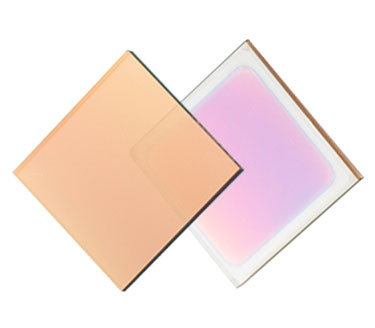
- Optical Products
Enhancing Projector Brightness: Inorganic Optical Components
Contents
The projector market continues to grow with improved brightness technology
Projectors are now widely used in business for meetings and presentations. Usage of projectors continuously grows in the entertainment field. Movie theaters use digital cinema projectors, while concerts and live events utilize “projection mapping” devices, which project computer graphic onto three-dimensional objects.
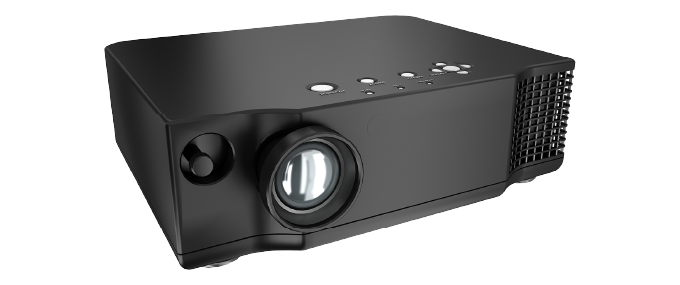
The latest projectors have notably better image quality than previous models. Until around 2010, it was necessary to dim the lights when using projectors because the projected images had low brightness. In recent years, however, improvements in technology have made it possible for the projected images to remain clear even in a brightly lit room.
Optical components made of inorganic materials are critical for improvement of brightness of projectors. Dexerials Precision Components Corporation (now Dexerials Photonics Solutions Corporation(DXPS)), a subsidiary of Dexerials Corporation, has developed inorganic polarizers, inorganic waveplates, and inorganic diffusers. This article will briefly explain the functions of each component and its importance in projectors.
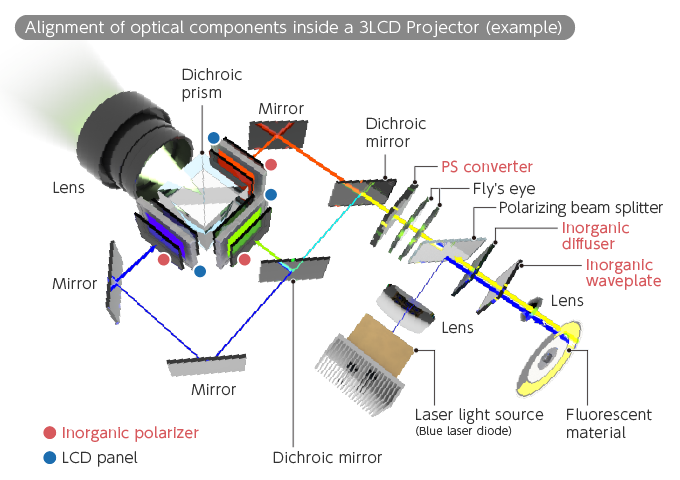
Overview of the three types of optical components
Let’s take a closer look at the three optical components developed by DXPS (formerly referred to as DXPC).
・Inorganic polarizers
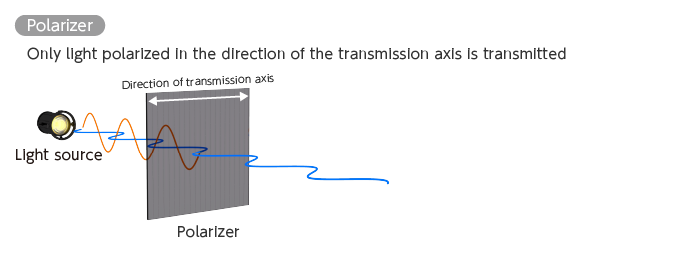
Polarizer plays a role of the filter. Light is a type of electromagnetic wave that travels through three-dimensional space. The sunlight or fluorescent light travel in a variety of directions: vertical, horizontal, and diagonal. Polarized light, however, refers to light in which its vibrational direction is aligned on a plane.
For example, fishermen wear polarized sunglasses to eliminate the glare of the water. The polarizing film of the sunglasses filters out the reflected light that travels parallel to the surface of the water, which causes the glare. Polarizers also align the direction of light waves emitted from a light source toward the direction of the transmission axis.
・Inorganic waveplates
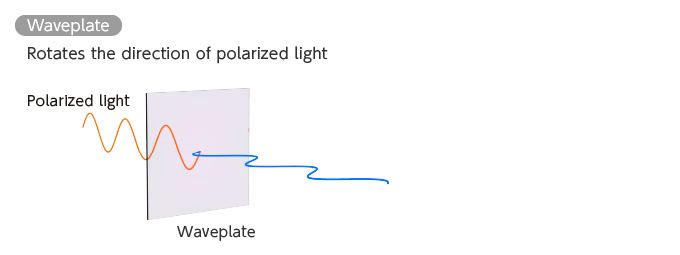
When light passes through a polarizer, it becomes polarized in a certain direction. However, its direction can be changed by passing through a waveplate. Waveplates are used to efficiently utilize the light inside projectors. There are several types of waveplates, including 1/8 waveplates and the two most common types,1/2 waveplates and 1/4 waveplates.
DXPS (formerly referred to as DXPC) also manufactures a component called the “PS converter,” which uses inorganic waveplates to polarize light.
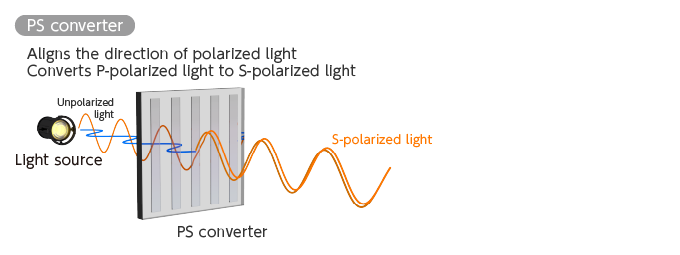
・Inorganic diffusers
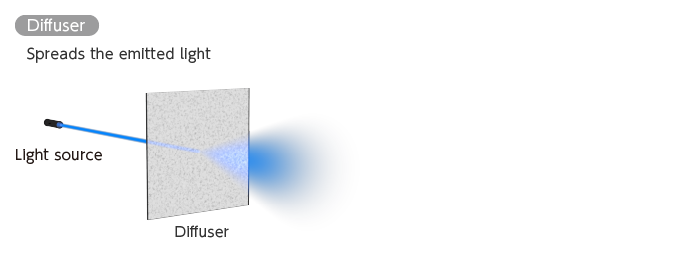
Diffusers spread out the light emitted from a light source. In the past, projectors used mercury lamps as a light source, but most modern projectors use lasers. Compared to ordinary light, laser light is highly directional and hardly spreads. It becomes easier to spread light over a specific area using a diffuser.
Why inorganic materials are needed for optical components
Although some optical components, including polarizers, waveplates, and diffusers, can be made of organic materials, recent high-brightness projectors are designed using inorganic materials due to their durability.
Laser light normally used in high-brightness projectors has a high level of energy, which generates heat. At such high temperatures, continued usage over a long period of time can change the molecular structure of organic optical components , resulting in a decline of image quality (e.g. discoloration). For this reason, inorganic materials, such as glass, which have high heat resistance and are almost unaffected by light, are now usually used in optical components.
DXPS (formerly referred to as DXPC) ’s proprietary nano-level processing technology of thin-film microstructures has enabled the company to create optical components with high transmission, low reflection, and high durability that do not degrade over time even when exposed to high temperatures and high light intensity.
In addition to projectors, devices that use optical components are continuing to grow in demand. In-vehicle head-up displays (HUDs), sensors, and entertainment devices such as augmented reality and virtual reality hardware also use optical components. Dexerials will continue research and development of optical components for new applications.
- SHARE
 Back to top
Back to top  Contact us
Contact us 


